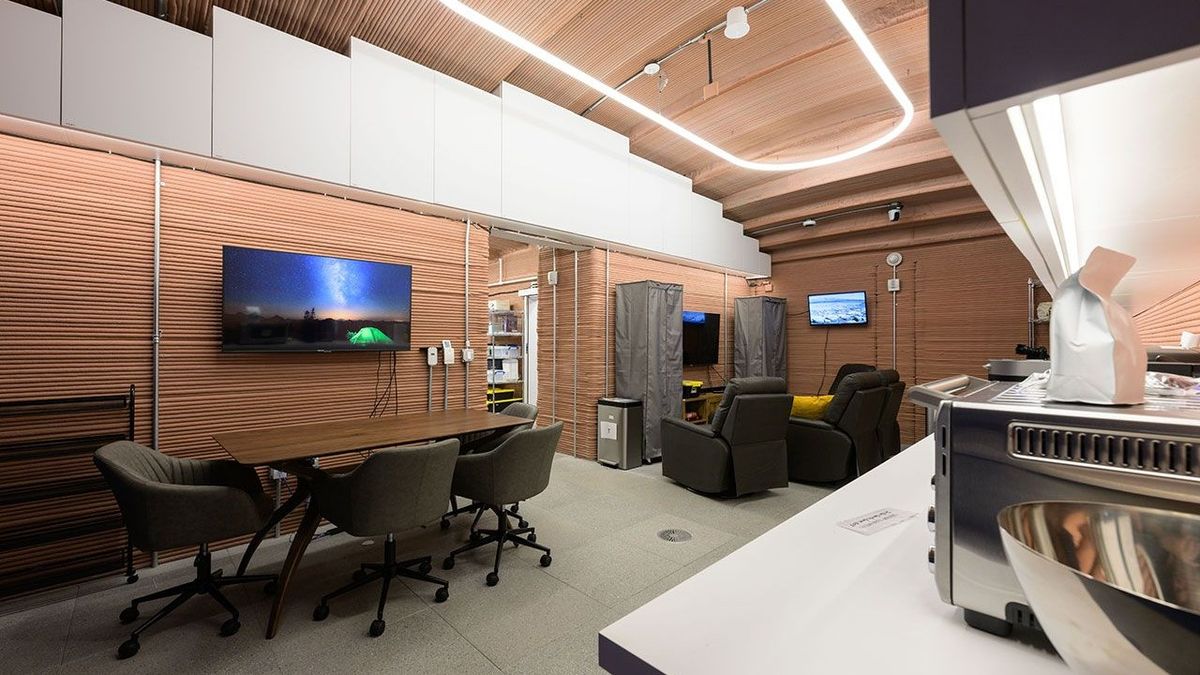
Applications are open for NASA's next year-long mock Mars mission, which simulates the challenges crews may face during future expeditions on the Red Planet.
The ground-based mission, called CHAPEA (Crew Health and Performance Exploration Analog), consists of four volunteer crewmembers living and working inside an isolated 1,700-square-foot (158 square meters), 3D-printed habitat. Located at NASA's Johnson Space Center in Houston, the Mars Dune Alpha habitat includes an adjoining 1,200-square-foot (111 square meters) enclosure used for simulated spacewalks.
"As NASA works to establish a long-term presence for scientific discovery and exploration on the moon through the Artemis campaign, CHAPEA missions provide important scientific data to validate systems and develop solutions for future missions to the Red Planet," NASA officials said in a statement.
Related: Tour the mock Mars habitat where 4 NASA analog astronauts will spend the next year (video)
The first CHAPEA crew is more than halfway through their year-long mission, which began on June 25, 2023 and is scheduled to end on July 6, 2024. Now, NASA is seeking applicants for its CHAPEA 2 mission, which is expected to kick off in spring 2025. Applications are open to the public through April 2, 2024.
"NASA is looking for healthy, motivated U.S. citizens or permanent residents who are non-smokers, 30-55 years old, and proficient in English for effective communication between crewmates and mission control," officials said in the statement from the space agency. "Applicants should have a strong desire for unique, rewarding adventures and interest in contributing to NASA's work to prepare for the first human journey to Mars."
Over the course of the year-long mission, the four-person crew will perform tasks ranging from robotic operations to habitat maintenance, crop growth, simulated spacewalks and exercise. The Mars Dune Alpha habitat is designed to replicate what future missions to Mars may look like, including challenges such as resource limitations, equipment failures, communication delays and other environmental stressors.
The walk through Mars Dune Alpha reveals the row of crew quarters in a hallway across from a lavatory and shower area. That hall turns at its end to an area setup for small-scale produce production, which sits adjacent to an open kitchen and recreation area with a table lounge furniture.
A doorway across the communal space leads to work area with a desk and shelving for equipment. Rooms on either side house fitness and laundry machinery, and robotics control stations and a 3D printer. Another doorway in the open work area features a small medical bay, which sits across from the habitat's primary airlock.
RELATED STORIES:
Applicants are required to have a degree in a STEM (science, technology, engineering and math) field or medicine, as well as professional experience in STEM, military training or test piloting. Full details of the application process and applicant requirements can be found online.
CHAPEA 2 is the second of three planned missions inside the Mars Dune Alpha habitat. Research gained through these simulated missions will help NASA support crew health and performance while living on Mars during future long-duration exploration missions.
Article From & Read More ( NASA looking for volunteers to spend a year on 'Mars' during simulated mission - Space.com )https://ift.tt/GD8WqdI
Science
No comments:
Post a Comment